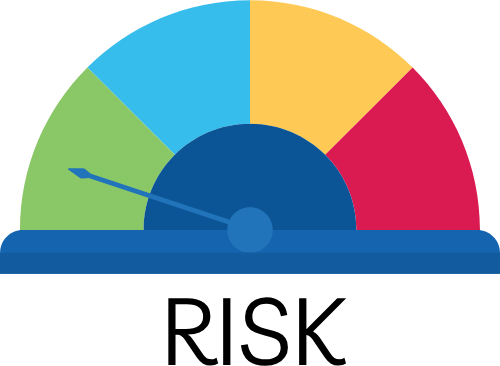In the fast-paced world of mobile app development, staying ahead of evolving technology and user demands is crucial. Traditional development methods, with rigid timelines and fixed requirements, often fail to keep up. Enter Agile development, an engineering mindset that emphasizes adaptability, collaboration, and iterative progress. It has rapidly transformed the mobile app industry, making it easier for developers and businesses to deliver apps that meet user needs, adjust to changes, and maintain high-quality standards.
In this post, we’ll explore the core principles of Agile, why it’s so impactful for mobile app development, and how it can help you bring innovative, user-friendly apps to life.
What is Agile Development?
Agile development is an umbrella term for a type of project management approach that breaks down the development process into small, manageable chunks called iterations or sprints. Unlike traditional “waterfall” methods, where a project is planned and executed in a linear fashion from start to finish, Agile allows for continuous adaptation, feedback, and improvements throughout the development cycle.
This adaptability is especially useful in mobile app development, where user expectations, industry conditions, and market trends can shift rapidly. At its core, Agile prioritizes:
- Iterative Development: Delivering small, functional parts of the app in regular intervals.
- Collaboration: Fostering teamwork between developers, designers, stakeholders, and clients.
- Adaptability: Adjusting project scope and priorities based on feedback, performance data, and changing requirements.
Core Principles of Agile Development
Agile development follows a set of core principles designed to encourage flexibility, collaboration, and customer satisfaction. Here’s a breakdown of some of the key concepts:
1. Iterative Progress Over a Defined Timeline
In Agile, projects are broken down into short, repeatable cycles called sprints, typically lasting 1 to two weeks. Each sprint focuses on delivering a working feature of the app, allowing the team to gather feedback and make adjustments before moving on to the next iteration.
A mobile banking app might start with developing the login functionality in one sprint, move on to the transaction history in the next, and then add payment features in subsequent sprints. Each phase is tested and improved based on user feedback.

2. Customer Collaboration Over Contract Negotiation
Unlike traditional methods where project details are fixed at the beginning, Agile encourages ongoing customer collaboration throughout development. This approach ensures that the product meets evolving needs and allows room for innovation.
A Case Study: Spotify, a popular music streaming app, uses an Agile approach to continuously roll out updates based on user behavior and market trends. Frequent collaboration between developers and product owners helps Spotify prioritize new features, optimize performance, and address bugs in real time.
3. Responding to Change Over Following a Plan
In Agile, change isn’t seen as a disruption but rather an opportunity to improve. This flexibility allows development teams to pivot quickly in response to new technologies, user feedback, or business needs.
Imagine developing a fitness app. Midway through the project, market research reveals a growing interest in virtual workout classes. Using Agile, the team can quickly shift focus to integrate live workout sessions into the app without derailing the entire project.

4. Simplicity and Efficiency
Agile emphasizes doing only what’s necessary to deliver value in each sprint, ensuring that time and resources are used effectively. This focus on efficiency means teams prioritize features that users care about most.
Why Agile is Transforming Mobile App Development
1. Faster Time-to-Market
With Agile’s iterative approach, developers can release a minimum viable product (MVP) quickly, allowing users to interact with the app and provide feedback early in the development cycle. This results in faster adjustments, and more frequent updates, keeping your app relevant in the ever-changing mobile market.
Twitter famously adopted an Agile approach to reduce their release cycles, enabling them to ship new features more frequently and respond to user needs faster. In general, companies that adopt Agile practices report improved team productivity, reduced cycle times, and higher quality product releases
2. Higher Customer Satisfaction
Because Agile involves frequent user feedback, apps are tailored more closely to what customers want, leading to higher satisfaction rates. This is critical for mobile apps, where user experience (UX) is everything.
Main Mechanisms by How Agile Improves Customer Satisfaction:
- Frequent Updates: New features and fixes are rolled out consistently.
- Improved UX: Changes based on user feedback ensure better usability.
- Bug Fixes: Problems are addressed quickly, reducing user frustration.
3. Reduced Risk of Failure
By breaking down development into smaller, manageable chunks, Agile helps teams identify potential problems early, reducing the risk of major issues down the line. If a feature doesn’t work as intended, the team can pivot without needing to overhaul the entire project.

Risk-Reduction Strategies Employed by Agile:
- Frequent Testing: Each iteration is tested individually to catch bugs early.
- Feedback Loops: Regular feedback ensures the project is heading in the right direction.
- Continuous Improvement: Lessons learned from each sprint improve the next.
4. Flexibility to Adapt to Market Trends
In a mobile app market where trends shift quickly, Agile allows teams to pivot and incorporate new ideas mid-project without the delays or additional costs associated with traditional development methods.
An e-commerce app may initially launch with basic shopping features. As social shopping trends emerge, the team can quickly pivot and introduce new social media integrations to engage users further.
In Conclusion: Agile is the Now & the Future of Mobile App Development
Agile development is revolutionizing the mobile app industry by offering a flexible, collaborative, and iterative approach to creating apps. Its core principles—iterative development, collaboration, and adaptability—enable development teams to produce high-quality, user-friendly products faster, with less risk of failure. By prioritizing customer satisfaction and responding to changes as they happen, Agile positions developers to meet the demands of today’s fast-evolving mobile market.
Whether you’re developing an MVP or scaling a fully-featured app, Agile ensures that your project is always aligned with user needs and market trends.
Ready to Transform Your App with AppCorp?
Agile isn’t just a methodology—it’s a game-changer. If you’re looking to build a mobile app that stays ahead of the curve, let us help you bring your vision to life. Click here to schedule a consultation and see how our Agile approach can transform your mobile app project!




